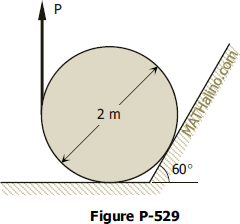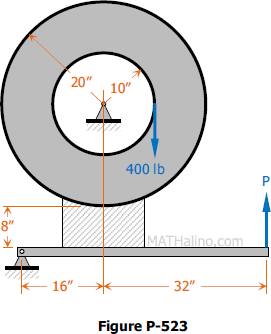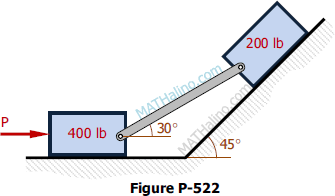Problem 533 | Friction
Problem 533
A uniform bar AB, weighing 424 N, is fastened by a frictionless pin to a block weighing 200 N as shown in Fig. P-533. At the vertical wall, μ = 0.268 while under the block, μ = 0.20. Determine the force P needed to start motion to the right.

- Read more about Problem 533 | Friction
- Log in to post comments





